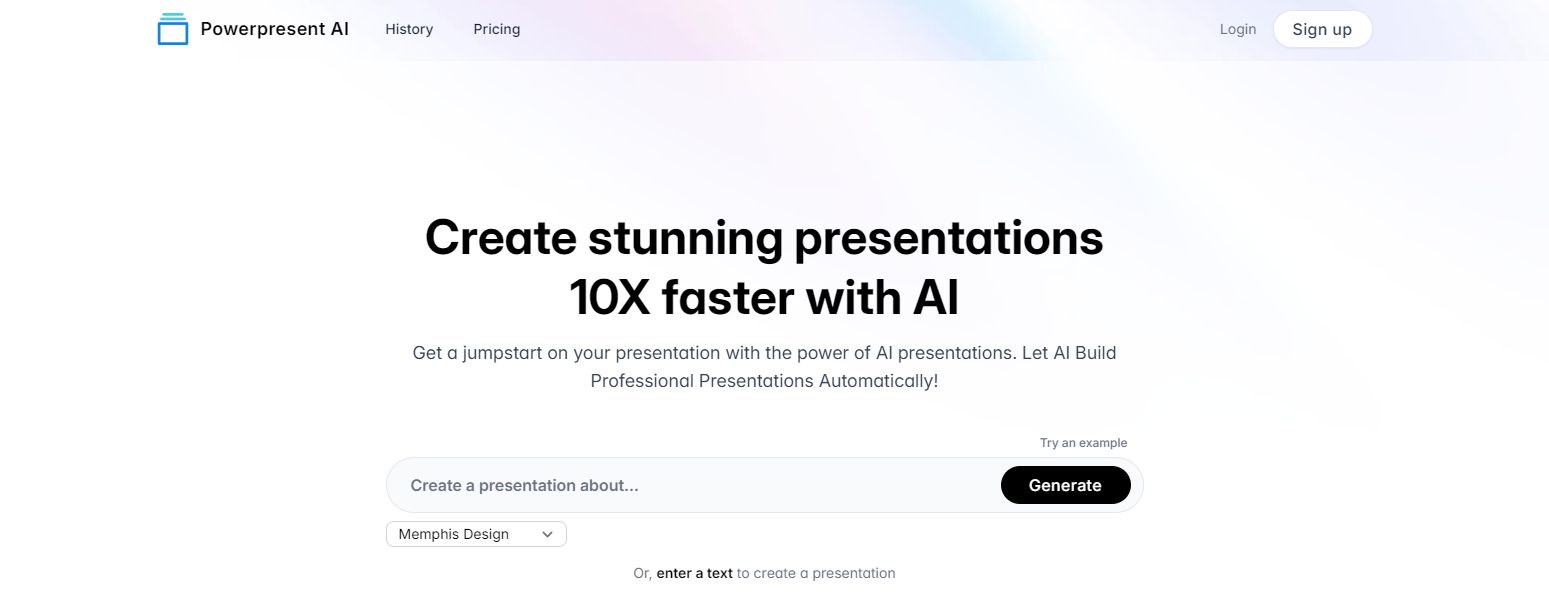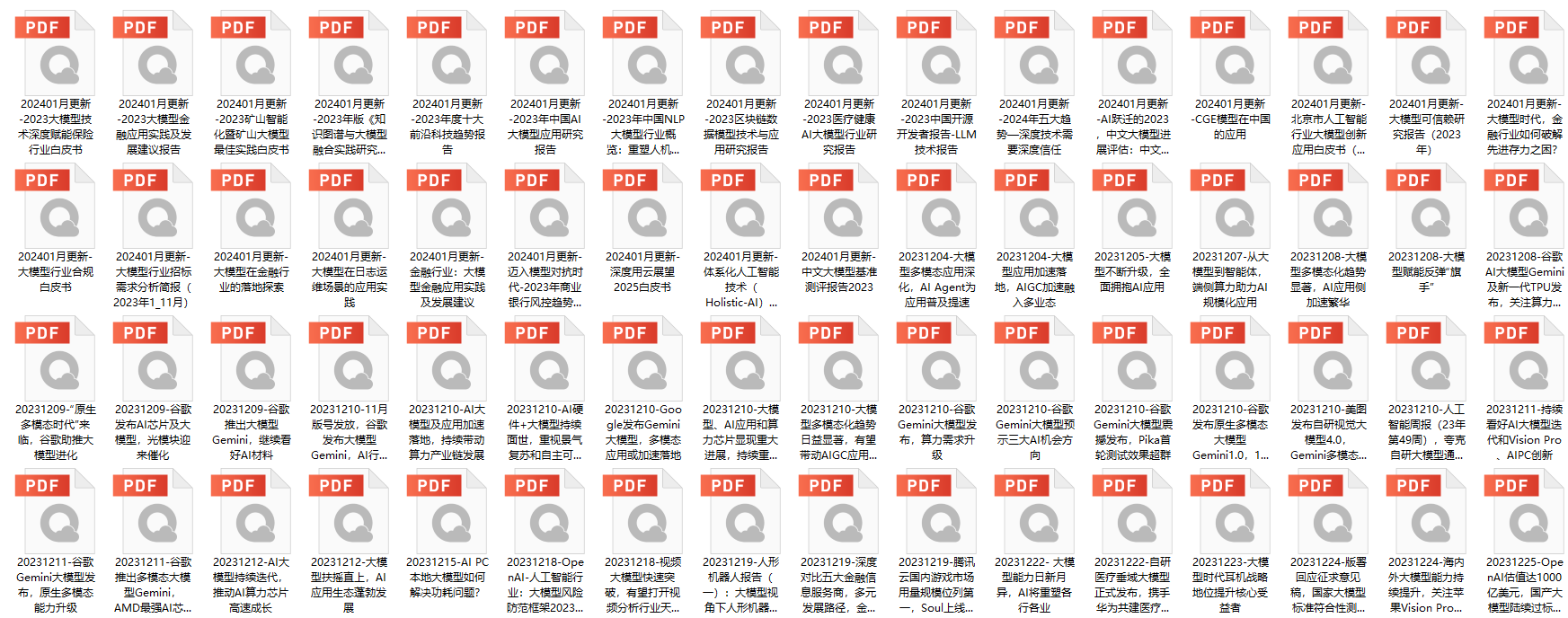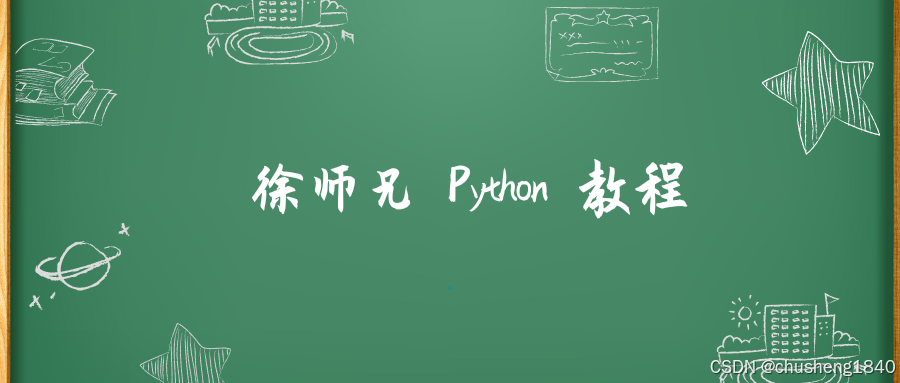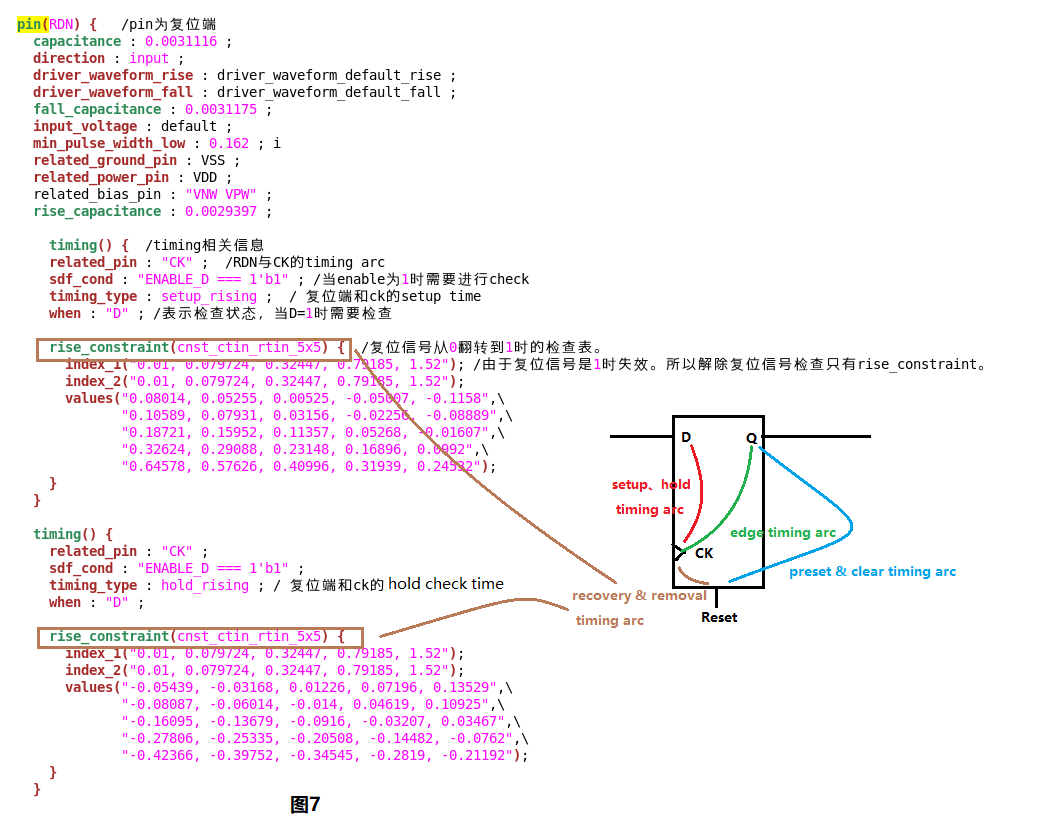别人贪婪时我恐惧,别人恐惧时我贪婪
-
Android Camera系列(一):SurfaceView+Camera
-
Android Camera系列(二):TextureView+Camera
-
Android Camera系列(三):GLSurfaceView+Camera
-
Android Camera系列(四):TextureView+OpenGL ES+Camera
本系列主要讲述Android开发中Camera的相关操作、预览方式、视频录制等,项目结构代码耦合性低,旨在帮助大家能从中有所收获(方便copy :) ),对于个人来说也是一个总结的好机会

本章我们讲解TextureView+OpenGL ES进行Camera预览。上一篇我们已经讲了GLSurfaceView的用法,它实际上是SurfaceView+OpenGL ES的实现,只不过官方已经把EGL的环境搭建封装好了。我们现在要使用TextureView就只能自己搭建EGL环境了。
一.CameraGLTextureView使用
如果要使用TextureView+OpenGL ES预览Camera数据,首先要搭建EGL环境(不了解EGL是什么,请看之前的文章:Android OpenGLES开发:EGL环境搭建),环境搭建好后,剩下的预览操作基本上和GLSurfaceView中相同,用到的滤镜也完全一样。与GLSurfaceView区别如下:
- EGL环境封装
- 自定义渲染线程
RenderThread和通信类RenderHandler
1. EGL封装
创建EglCore核心工具类
/*** Core EGL state (display, context, config).* <p>* The EGLContext must only be attached to one thread at a time. This class is not thread-safe.*/
public final class EglCore {private static final String TAG = EglCore.class.getSimpleName();/*** Constructor flag: surface must be recordable. This discourages EGL from using a* pixel format that cannot be converted efficiently to something usable by the video* encoder.*/public static final int FLAG_RECORDABLE = 0x01;/*** Constructor flag: ask for GLES3, fall back to GLES2 if not available. Without this* flag, GLES2 is used.*/public static final int FLAG_TRY_GLES3 = 0x02;// Android-specific extension.private static final int EGL_RECORDABLE_ANDROID = 0x3142;private EGLDisplay mEGLDisplay = EGL14.EGL_NO_DISPLAY;private EGLContext mEGLContext = EGL14.EGL_NO_CONTEXT;private EGLConfig mEGLConfig = null;private int mGlVersion = -1;/*** Prepares EGL display and context.* <p>* Equivalent to EglCore(null, 0).*/public EglCore() {this(null, 0);}/*** Prepares EGL display and context.* <p>* @param sharedContext The context to share, or null if sharing is not desired.* @param flags Configuration bit flags, e.g. FLAG_RECORDABLE.*/public EglCore(EGLContext sharedContext, int flags) {if (mEGLDisplay != EGL14.EGL_NO_DISPLAY) {throw new RuntimeException("EGL already set up");}if (sharedContext == null) {sharedContext = EGL14.EGL_NO_CONTEXT;}mEGLDisplay = EGL14.eglGetDisplay(EGL14.EGL_DEFAULT_DISPLAY);if (mEGLDisplay == EGL14.EGL_NO_DISPLAY) {throw new RuntimeException("unable to get EGL14 display");}int[] version = new int[2];if (!EGL14.eglInitialize(mEGLDisplay, version, 0, version, 1)) {mEGLDisplay = null;throw new RuntimeException("unable to initialize EGL14");}// Try to get a GLES3 context, if requested.if ((flags & FLAG_TRY_GLES3) != 0) {//Log.d(TAG, "Trying GLES 3");EGLConfig config = getConfig(flags, 3);if (config != null) {int[] attrib3_list = {EGL14.EGL_CONTEXT_CLIENT_VERSION, 3,EGL14.EGL_NONE};EGLContext context = EGL14.eglCreateContext(mEGLDisplay, config, sharedContext,attrib3_list, 0);if (EGL14.eglGetError() == EGL14.EGL_SUCCESS) {//Log.d(TAG, "Got GLES 3 config");mEGLConfig = config;mEGLContext = context;mGlVersion = 3;}}}if (mEGLContext == EGL14.EGL_NO_CONTEXT) { // GLES 2 only, or GLES 3 attempt failed//Log.d(TAG, "Trying GLES 2");EGLConfig config = getConfig(flags, 2);if (config == null) {throw new RuntimeException("Unable to find a suitable EGLConfig");}int[] attrib2_list = {EGL14.EGL_CONTEXT_CLIENT_VERSION, 2,EGL14.EGL_NONE};EGLContext context = EGL14.eglCreateContext(mEGLDisplay, config, sharedContext,attrib2_list, 0);checkEglError("eglCreateContext");mEGLConfig = config;mEGLContext = context;mGlVersion = 2;}// Confirm with query.int[] values = new int[1];EGL14.eglQueryContext(mEGLDisplay, mEGLContext, EGL14.EGL_CONTEXT_CLIENT_VERSION,values, 0);Log.d(TAG, "EGLContext created, client version " + values[0]);}/*** Finds a suitable EGLConfig.** @param flags Bit flags from constructor.* @param version Must be 2 or 3.*/private EGLConfig getConfig(int flags, int version) {int renderableType = EGL14.EGL_OPENGL_ES2_BIT;if (version >= 3) {renderableType |= EGLExt.EGL_OPENGL_ES3_BIT_KHR;}// The actual surface is generally RGBA or RGBX, so situationally omitting alpha// doesn't really help. It can also lead to a huge performance hit on glReadPixels()// when reading into a GL_RGBA buffer.int[] attribList = {EGL14.EGL_RED_SIZE, 8,EGL14.EGL_GREEN_SIZE, 8,EGL14.EGL_BLUE_SIZE, 8,EGL14.EGL_ALPHA_SIZE, 8,//EGL14.EGL_DEPTH_SIZE, 16,//EGL14.EGL_STENCIL_SIZE, 8,EGL14.EGL_RENDERABLE_TYPE, renderableType,EGL14.EGL_NONE, 0, // placeholder for recordable [@-3]EGL14.EGL_NONE};if ((flags & FLAG_RECORDABLE) != 0) {attribList[attribList.length - 3] = EGL_RECORDABLE_ANDROID;attribList[attribList.length - 2] = 1;}EGLConfig[] configs = new EGLConfig[1];int[] numConfigs = new int[1];if (!EGL14.eglChooseConfig(mEGLDisplay, attribList, 0, configs, 0, configs.length,numConfigs, 0)) {Log.w(TAG, "unable to find RGB8888 / " + version + " EGLConfig");return null;}return configs[0];}/*** Discards all resources held by this class, notably the EGL context. This must be* called from the thread where the context was created.* <p>* On completion, no context will be current.*/public void release() {if (mEGLDisplay != EGL14.EGL_NO_DISPLAY) {// Android is unusual in that it uses a reference-counted EGLDisplay. So for// every eglInitialize() we need an eglTerminate().EGL14.eglMakeCurrent(mEGLDisplay, EGL14.EGL_NO_SURFACE, EGL14.EGL_NO_SURFACE,EGL14.EGL_NO_CONTEXT);EGL14.eglDestroyContext(mEGLDisplay, mEGLContext);EGL14.eglReleaseThread();EGL14.eglTerminate(mEGLDisplay);}mEGLDisplay = EGL14.EGL_NO_DISPLAY;mEGLContext = EGL14.EGL_NO_CONTEXT;mEGLConfig = null;}@Overrideprotected void finalize() throws Throwable {try {if (mEGLDisplay != EGL14.EGL_NO_DISPLAY) {// We're limited here -- finalizers don't run on the thread that holds// the EGL state, so if a surface or context is still current on another// thread we can't fully release it here. Exceptions thrown from here// are quietly discarded. Complain in the log file.Log.w(TAG, "WARNING: EglCore was not explicitly released -- state may be leaked");release();}} finally {super.finalize();}}/*** Destroys the specified surface. Note the EGLSurface won't actually be destroyed if it's* still current in a context.*/public void releaseSurface(EGLSurface eglSurface) {EGL14.eglDestroySurface(mEGLDisplay, eglSurface);}/*** Creates an EGL surface associated with a Surface.* <p>* If this is destined for MediaCodec, the EGLConfig should have the "recordable" attribute.*/public EGLSurface createWindowSurface(Object surface) {if (!(surface instanceof Surface) && !(surface instanceof SurfaceTexture)) {throw new RuntimeException("invalid surface: " + surface);}// Create a window surface, and attach it to the Surface we received.int[] surfaceAttribs = {EGL14.EGL_NONE};EGLSurface eglSurface = EGL14.eglCreateWindowSurface(mEGLDisplay, mEGLConfig, surface,surfaceAttribs, 0);checkEglError("eglCreateWindowSurface");if (eglSurface == null) {throw new RuntimeException("surface was null");}return eglSurface;}/*** Creates an EGL surface associated with an offscreen buffer.*/public EGLSurface createOffscreenSurface(int width, int height) {int[] surfaceAttribs = {EGL14.EGL_WIDTH, width,EGL14.EGL_HEIGHT, height,EGL14.EGL_NONE};EGLSurface eglSurface = EGL14.eglCreatePbufferSurface(mEGLDisplay, mEGLConfig,surfaceAttribs, 0);checkEglError("eglCreatePbufferSurface");if (eglSurface == null) {throw new RuntimeException("surface was null");}return eglSurface;}/*** Makes our EGL context current, using the supplied surface for both "draw" and "read".*/public void makeCurrent(EGLSurface eglSurface) {if (mEGLDisplay == EGL14.EGL_NO_DISPLAY) {// called makeCurrent() before create?Log.d(TAG, "NOTE: makeCurrent w/o display");}if (!EGL14.eglMakeCurrent(mEGLDisplay, eglSurface, eglSurface, mEGLContext)) {throw new RuntimeException("eglMakeCurrent failed");}}/*** Makes our EGL context current, using the supplied "draw" and "read" surfaces.*/public void makeCurrent(EGLSurface drawSurface, EGLSurface readSurface) {if (mEGLDisplay == EGL14.EGL_NO_DISPLAY) {// called makeCurrent() before create?Log.d(TAG, "NOTE: makeCurrent w/o display");}if (!EGL14.eglMakeCurrent(mEGLDisplay, drawSurface, readSurface, mEGLContext)) {throw new RuntimeException("eglMakeCurrent(draw,read) failed");}}/*** Makes no context current.*/public void makeNothingCurrent() {if (!EGL14.eglMakeCurrent(mEGLDisplay, EGL14.EGL_NO_SURFACE, EGL14.EGL_NO_SURFACE,EGL14.EGL_NO_CONTEXT)) {throw new RuntimeException("eglMakeCurrent failed");}}/*** Calls eglSwapBuffers. Use this to "publish" the current frame.** @return false on failure*/public boolean swapBuffers(EGLSurface eglSurface) {return EGL14.eglSwapBuffers(mEGLDisplay, eglSurface);}/*** Sends the presentation time stamp to EGL. Time is expressed in nanoseconds.*/public void setPresentationTime(EGLSurface eglSurface, long nsecs) {EGLExt.eglPresentationTimeANDROID(mEGLDisplay, eglSurface, nsecs);}/*** Returns true if our context and the specified surface are current.*/public boolean isCurrent(EGLSurface eglSurface) {return mEGLContext.equals(EGL14.eglGetCurrentContext()) &&eglSurface.equals(EGL14.eglGetCurrentSurface(EGL14.EGL_DRAW));}/*** Performs a simple surface query.*/public int querySurface(EGLSurface eglSurface, int what) {int[] value = new int[1];EGL14.eglQuerySurface(mEGLDisplay, eglSurface, what, value, 0);return value[0];}/*** Queries a string value.*/public String queryString(int what) {return EGL14.eglQueryString(mEGLDisplay, what);}/*** Returns the GLES version this context is configured for (currently 2 or 3).*/public int getGlVersion() {return mGlVersion;}/*** Writes the current display, context, and surface to the log.*/public static void logCurrent(String msg) {EGLDisplay display;EGLContext context;EGLSurface surface;display = EGL14.eglGetCurrentDisplay();context = EGL14.eglGetCurrentContext();surface = EGL14.eglGetCurrentSurface(EGL14.EGL_DRAW);Log.i(TAG, "Current EGL (" + msg + "): display=" + display + ", context=" + context +", surface=" + surface);}/*** Checks for EGL errors. Throws an exception if an error has been raised.*/private void checkEglError(String msg) {int error;if ((error = EGL14.eglGetError()) != EGL14.EGL_SUCCESS) {throw new RuntimeException(msg + ": EGL error: 0x" + Integer.toHexString(error));}}
}
创建EglSurfaceBase类,用于操作EGLSurface使用
/*** Common base class for EGL surfaces.* <p>* There can be multiple surfaces associated with a single context.*/
public class EglSurfaceBase {protected static final String TAG = EglSurfaceBase.class.getSimpleName();// EglCore object we're associated with. It may be associated with multiple surfaces.protected EglCore mEglCore;private EGLSurface mEGLSurface = EGL14.EGL_NO_SURFACE;private int mWidth = -1;private int mHeight = -1;protected EglSurfaceBase(EglCore eglCore) {mEglCore = eglCore;}/*** Creates a window surface.* <p>* @param surface May be a Surface or SurfaceTexture.*/public void createWindowSurface(Object surface) {if (mEGLSurface != EGL14.EGL_NO_SURFACE) {throw new IllegalStateException("surface already created");}mEGLSurface = mEglCore.createWindowSurface(surface);}/*** Creates an off-screen surface.*/public void createOffscreenSurface(int width, int height) {if (mEGLSurface != EGL14.EGL_NO_SURFACE) {throw new IllegalStateException("surface already created");}mEGLSurface = mEglCore.createOffscreenSurface(width, height);mWidth = width;mHeight = height;}/*** Returns the surface's width, in pixels.* <p>* If this is called on a window surface, and the underlying surface is in the process* of changing size, we may not see the new size right away (e.g. in the "surfaceChanged"* callback). The size should match after the next buffer swap.*/public int getWidth() {if (mWidth < 0) {return mEglCore.querySurface(mEGLSurface, EGL14.EGL_WIDTH);} else {return mWidth;}}/*** Returns the surface's height, in pixels.*/public int getHeight() {if (mHeight < 0) {return mEglCore.querySurface(mEGLSurface, EGL14.EGL_HEIGHT);} else {return mHeight;}}/*** Release the EGL surface.*/public void releaseEglSurface() {mEglCore.releaseSurface(mEGLSurface);mEGLSurface = EGL14.EGL_NO_SURFACE;mWidth = mHeight = -1;}/*** Makes our EGL context and surface current.*/public void makeCurrent() {mEglCore.makeCurrent(mEGLSurface);}/*** Makes our EGL context and surface current for drawing, using the supplied surface* for reading.*/public void makeCurrentReadFrom(EglSurfaceBase readSurface) {mEglCore.makeCurrent(mEGLSurface, readSurface.mEGLSurface);}/*** Calls eglSwapBuffers. Use this to "publish" the current frame.** @return false on failure*/public boolean swapBuffers() {boolean result = mEglCore.swapBuffers(mEGLSurface);if (!result) {Log.d(TAG, "WARNING: swapBuffers() failed");}return result;}/*** Sends the presentation time stamp to EGL.** @param nsecs Timestamp, in nanoseconds.*/public void setPresentationTime(long nsecs) {mEglCore.setPresentationTime(mEGLSurface, nsecs);}/*** Saves the EGL surface to a file.* <p>* Expects that this object's EGL surface is current.*/public void saveFrame(File file) throws IOException {if (!mEglCore.isCurrent(mEGLSurface)) {throw new RuntimeException("Expected EGL context/surface is not current");}String filename = file.toString();int width = getWidth();int height = getHeight();ByteBuffer buf = ByteBuffer.allocateDirect(width * height * 4);buf.order(ByteOrder.LITTLE_ENDIAN);GLES20.glReadPixels(0, 0, width, height,GLES20.GL_RGBA, GLES20.GL_UNSIGNED_BYTE, buf);GLESUtils.checkGlError("glReadPixels");buf.rewind();BufferedOutputStream bos = null;try {bos = new BufferedOutputStream(new FileOutputStream(filename));Bitmap bmp = Bitmap.createBitmap(width, height, Bitmap.Config.ARGB_8888);bmp.copyPixelsFromBuffer(buf);bmp.compress(Bitmap.CompressFormat.PNG, 90, bos);bmp.recycle();} finally {if (bos != null) bos.close();}Log.d(TAG, "Saved " + width + "x" + height + " frame as '" + filename + "'");}
}
创建WindowSurface继承EglSurfaceBase
/*** Recordable EGL window surface.* <p>* It's good practice to explicitly release() the surface, preferably from a "finally" block.*/
public class WindowSurface extends EglSurfaceBase {private Surface mSurface;private boolean mReleaseSurface;/*** Associates an EGL surface with the native window surface.* <p>* Set releaseSurface to true if you want the Surface to be released when release() is* called. This is convenient, but can interfere with framework classes that expect to* manage the Surface themselves (e.g. if you release a SurfaceView's Surface, the* surfaceDestroyed() callback won't fire).*/public WindowSurface(EglCore eglCore, Surface surface, boolean releaseSurface) {super(eglCore);createWindowSurface(surface);mSurface = surface;mReleaseSurface = releaseSurface;}/*** Associates an EGL surface with the SurfaceTexture.*/public WindowSurface(EglCore eglCore, SurfaceTexture surfaceTexture) {super(eglCore);createWindowSurface(surfaceTexture);}/*** Releases any resources associated with the EGL surface (and, if configured to do so,* with the Surface as well).* <p>* Does not require that the surface's EGL context be current.*/public void release() {releaseEglSurface();if (mSurface != null) {if (mReleaseSurface) {mSurface.release();}mSurface = null;}}/*** Recreate the EGLSurface, using the new EglBase. The caller should have already* freed the old EGLSurface with releaseEglSurface().* <p>* This is useful when we want to update the EGLSurface associated with a Surface.* For example, if we want to share with a different EGLContext, which can only* be done by tearing down and recreating the context. (That's handled by the caller;* this just creates a new EGLSurface for the Surface we were handed earlier.)* <p>* If the previous EGLSurface isn't fully destroyed, e.g. it's still current on a* context somewhere, the create call will fail with complaints from the Surface* about already being connected.*/public void recreate(EglCore newEglCore) {if (mSurface == null) {throw new RuntimeException("not yet implemented for SurfaceTexture");}mEglCore = newEglCore; // switch to new contextcreateWindowSurface(mSurface); // create new surface}
}
2. 自定义RenderThread
使用OpenGL ES渲染Camera预览数据,其主要实现3个核心方法和SurfaceTexture的生命周期相匹配,以及帧预览数据回调接口
public class RenderThread extends Thread {public void surfaceAvailable(Object surface) {}public void surfaceChanged(int width, int height) {}public void surfaceDestroyed() {}public void frameAvailable() {}
}
完整代码:
public class RenderThread extends Thread {private static final String TAG = RenderThread.class.getSimpleName();private static final int RECORDING_OFF = 0;private static final int RECORDING_ON = 1;private static final int RECORDING_RESUMED = 2;// Used to wait for the thread to start.private Object mStartLock = new Object();private Context mContext;private boolean mReady = false;private Handler mMainHandler;private RenderHandler mHandler;// width/height of the incoming camera preview framesprivate SurfaceTexture mPreviewTexture;private int mTextureId;private float[] mDisplayProjectionMatrix = new float[16];private EglCore mEglCore;private WindowSurface mWindowSurface;private CameraFilter mCameraFilter;private CameraFilter mFBOFilter;private ScreenFilter mScreenFilter;private int mCameraPreviewWidth, mCameraPreviewHeight;private boolean mSizeUpdated;private File mOutputFile;private TextureMovieEncoder2 mVideoEncoder;private boolean mRecordingEnabled;private int mRecordingStatus;private long mVideoMillis;public RenderThread(Context context, TextureMovieEncoder2 textureMovieEncoder) {super("Renderer Thread");mContext = context;mMainHandler = new Handler(mContext.getMainLooper());mVideoEncoder = textureMovieEncoder;mSizeUpdated = false;mCameraFilter = new CameraFilter();mFBOFilter = new CameraFilter();mFBOFilter.setFBO(true);mScreenFilter = new ScreenFilter();}@Overridepublic void run() {super.run();Logs.i(TAG, "Render Thread start.");Looper.prepare();// We need to create the Handler before reporting ready.mHandler = new RenderHandler(this);synchronized (mStartLock) {mReady = true;mStartLock.notify(); // signal waitUntilReady()}// Prepare EGL and open the camera before we start handling messages.mEglCore = new EglCore(null, EglCore.FLAG_RECORDABLE | EglCore.FLAG_TRY_GLES3);Logs.i(TAG, "Egl version:" + mEglCore.getGlVersion());Looper.loop();mHandler = null;releaseGl();mEglCore.release();Logs.v(TAG, "Render Thread exit.");}/*** Notifies the renderer that we want to stop or start recording.*/public void changeRecordingState(boolean isRecording) {Log.d(TAG, "changeRecordingState: was " + mRecordingEnabled + " now " + isRecording);mRecordingEnabled = isRecording;if (!mRecordingEnabled) {notifyStopRecord();}}public void notifyStopRecord() {if (mVideoEncoder != null && mVideoEncoder.isRecording()) {mVideoEncoder.stopRecord();mRecordingStatus = RECORDING_OFF;}}/*** Waits until the render thread is ready to receive messages.* <p>* Call from the UI thread.*/public void waitUntilReady() {synchronized (mStartLock) {while (!mReady) {try {mStartLock.wait();} catch (InterruptedException ie) { /* not expected */ }}}}/*** Shuts everything down.*/public void shutdown() {Log.d(TAG, "shutdown");Looper.myLooper().quit();}public RenderHandler getHandler() {return mHandler;}public void surfaceAvailable(Object surface) {mRecordingEnabled = mVideoEncoder.isRecording();if (mRecordingEnabled) {mRecordingStatus = RECORDING_RESUMED;} else {mRecordingStatus = RECORDING_OFF;}if (surface instanceof SurfaceHolder) {mWindowSurface = new WindowSurface(mEglCore, ((SurfaceHolder) surface).getSurface(), false);} else if (surface instanceof SurfaceTexture) {mWindowSurface = new WindowSurface(mEglCore, (SurfaceTexture) surface);}mWindowSurface.makeCurrent();// Set up the texture blitter that will be used for on-screen display. This// is *not* applied to the recording, because that uses a separate shader.mTextureId = GLESUtils.createOESTexture();mPreviewTexture = new SurfaceTexture(mTextureId);mCameraFilter.surfaceCreated();mFBOFilter.surfaceCreated();mScreenFilter.surfaceCreated();mMainHandler.post(() -> {if (mGLSurfaceTextureCallback != null) {mGLSurfaceTextureCallback.onGLSurfaceCreated(mPreviewTexture);}});}public void surfaceChanged(int width, int height) {mCameraFilter.surfaceChanged(width, height);mFBOFilter.surfaceChanged(width, height);mScreenFilter.surfaceChanged(width, height);}public void surfaceDestroyed() {// In practice this never appears to be called -- the activity is always paused// before the surface is destroyed. In theory it could be called though.Log.d(TAG, "RenderThread surfaceDestroyed");releaseGl();}public void frameAvailable() {draw();}public void draw() {if (mPreviewTexture == null) return;if (mWindowSurface == null) return;mPreviewTexture.updateTexImage();GLESUtils.checkGlError("draw start");// If the recording state is changing, take care of it here. Ideally we wouldn't// be doing all this in onDrawFrame(), but the EGLContext sharing with GLSurfaceView// makes it hard to do elsewhere.if (mRecordingEnabled) {switch (mRecordingStatus) {case RECORDING_OFF:Log.d(TAG, "START recording");// 开始录制前删除之前的视频文件String name = "VID_" + ImageUtils.DATE_FORMAT.format(new Date(System.currentTimeMillis())) + ".mp4";mOutputFile = new File(ImageUtils.getVideoPath(), name);// start recordingmVideoEncoder.startRecord(new TextureMovieEncoder2.EncoderConfig(mOutputFile, mCameraPreviewHeight, mCameraPreviewWidth, mCameraPreviewWidth * mCameraPreviewHeight * 10, mEglCore));mRecordingStatus = RECORDING_ON;break;case RECORDING_RESUMED:Log.d(TAG, "RESUME recording");mRecordingStatus = RECORDING_ON;break;case RECORDING_ON:// yaybreak;default:throw new RuntimeException("unknown status " + mRecordingStatus);}} else {switch (mRecordingStatus) {case RECORDING_ON:case RECORDING_RESUMED:// stop recordingLog.d(TAG, "STOP recording");mVideoEncoder.stopRecord();mRecordingStatus = RECORDING_OFF;break;case RECORDING_OFF:// yaybreak;default:throw new RuntimeException("unknown status " + mRecordingStatus);}}if (mCameraPreviewWidth <= 0 || mCameraPreviewHeight <= 0) {return;}if (mSizeUpdated) {mSizeUpdated = false;}boolean swapResult;if (!mVideoEncoder.isRecording()) {swapResult = drawScreen();} else {swapResult = drawRecord();}if (!swapResult) {// This can happen if the Activity stops without waiting for us to halt.Log.w(TAG, "swapBuffers failed, killing renderer thread");shutdown();}}/*** 绘制到屏幕Surface中,用来在界面上显示*/private boolean drawScreen() {mPreviewTexture.getTransformMatrix(mDisplayProjectionMatrix);mCameraFilter.draw(mTextureId, mDisplayProjectionMatrix);return mWindowSurface.swapBuffers();}/*** 绘制到视频Surface中,用来录制视频*/private boolean drawRecord() {boolean swapResult;WindowSurface recordWindowSurface = mVideoEncoder.getInputWindowSurface();if (recordWindowSurface != null && mEglCore.getGlVersion() >= 3) { // draw blit framebufferswapResult = drawBlitFrameBuffer(recordWindowSurface);} else if (recordWindowSurface != null) { // draw twice or draw FBO// 两种方式任选其一swapResult = drawTwice(recordWindowSurface);
// swapResult = drawFBO(recordWindowSurface);} else {swapResult = drawScreen();}return swapResult;}/*** BlitFramebuffer方式** @param recordWindowSurface* @return*/private boolean drawBlitFrameBuffer(WindowSurface recordWindowSurface) {boolean swapResult;// 先绘制到屏幕上mPreviewTexture.getTransformMatrix(mDisplayProjectionMatrix);mCameraFilter.draw(mTextureId, mDisplayProjectionMatrix);mVideoEncoder.frameAvailable();// 把屏幕Surface渲染数据拷贝到视频Surface中// 该中方式的效率是最高的,一次渲染输出给多个目标,但是只有OpenGL3.0才有该方法recordWindowSurface.makeCurrentReadFrom(mWindowSurface);GLES30.glBlitFramebuffer(0, 0, mWindowSurface.getWidth(), mWindowSurface.getHeight(),0, 0, mVideoEncoder.getVideoWidth(), mVideoEncoder.getVideoHeight(),GLES30.GL_COLOR_BUFFER_BIT, GLES30.GL_NEAREST);int err;if ((err = GLES30.glGetError()) != GLES30.GL_NO_ERROR) {Log.w(TAG, "ERROR: glBlitFramebuffer failed: 0x" +Integer.toHexString(err));}recordWindowSurface.setPresentationTime(mPreviewTexture.getTimestamp());recordWindowSurface.swapBuffers();// 切换为屏幕SurfacemWindowSurface.makeCurrent();swapResult = mWindowSurface.swapBuffers();return swapResult;}/*** 二次渲染方式** @param recordWindowSurface* @return*/private boolean drawTwice(WindowSurface recordWindowSurface) {boolean swapResult;// 先绘制到屏幕上mPreviewTexture.getTransformMatrix(mDisplayProjectionMatrix);mCameraFilter.draw(mTextureId, mDisplayProjectionMatrix);swapResult = mWindowSurface.swapBuffers();// 再绘制到视频Surface中mVideoEncoder.frameAvailable();recordWindowSurface.makeCurrent();GLES20.glViewport(0, 0,mVideoEncoder.getVideoWidth(), mVideoEncoder.getVideoHeight());mCameraFilter.draw(mTextureId, mDisplayProjectionMatrix);recordWindowSurface.setPresentationTime(mPreviewTexture.getTimestamp());recordWindowSurface.swapBuffers();// RestoreGLES20.glViewport(0, 0, mWindowSurface.getWidth(), mWindowSurface.getHeight());mWindowSurface.makeCurrent();return swapResult;}/*** 离屏渲染** @param recordWindowSurface* @return*/private boolean drawFBO(WindowSurface recordWindowSurface) {boolean swapResult;// 将数据绘制到FBO Buffer中mPreviewTexture.getTransformMatrix(mDisplayProjectionMatrix);int fboId = mFBOFilter.draw(mTextureId, mDisplayProjectionMatrix);// 将离屏FrameBuffer绘制到视频Surface中mVideoEncoder.frameAvailable();recordWindowSurface.makeCurrent();GLES20.glViewport(0, 0,mVideoEncoder.getVideoWidth(), mVideoEncoder.getVideoHeight());mScreenFilter.draw(fboId, mDisplayProjectionMatrix);recordWindowSurface.setPresentationTime(mPreviewTexture.getTimestamp());recordWindowSurface.swapBuffers();// 将离屏FrameBuffer绘制到屏幕Surface中mWindowSurface.makeCurrent();GLES20.glViewport(0, 0, mWindowSurface.getWidth(), mWindowSurface.getHeight());mScreenFilter.draw(fboId, mDisplayProjectionMatrix);swapResult = mWindowSurface.swapBuffers();return swapResult;}public void setCameraPreviewSize(int width, int height) {mCameraPreviewWidth = width;mCameraPreviewHeight = height;mSizeUpdated = true;}/*** Releases most of the GL resources we currently hold (anything allocated by* surfaceAvailable()).* <p>* Does not release EglCore.*/private void releaseGl() {GLESUtils.checkGlError("releaseGl start");if (mWindowSurface != null) {mWindowSurface.release();mWindowSurface = null;}if (mPreviewTexture != null) {mPreviewTexture.release();mPreviewTexture = null;}if (mCameraFilter != null) {mCameraFilter.release();}if (mFBOFilter != null) {mFBOFilter.release();}if (mScreenFilter != null) {mScreenFilter.release();}GLESUtils.checkGlError("releaseGl done");mEglCore.makeNothingCurrent();}private GLSurfaceTextureCallback mGLSurfaceTextureCallback;public void setGLSurfaceTextureCallback(GLSurfaceTextureCallback GLSurfaceTextureCallback) {mGLSurfaceTextureCallback = GLSurfaceTextureCallback;}public interface GLSurfaceTextureCallback {void onGLSurfaceCreated(SurfaceTexture surfaceTexture);}
}
渲染线程通信Handler代码如下:
public class RenderHandler extends Handler {private static final String TAG = RenderHandler.class.getSimpleName();private static final int MSG_SURFACE_AVAILABLE = 0;private static final int MSG_SURFACE_CHANGED = 1;private static final int MSG_SURFACE_DESTROYED = 2;private static final int MSG_SHUTDOWN = 3;private static final int MSG_FRAME_AVAILABLE = 4;private static final int MSG_ZOOM_VALUE = 5;private static final int MSG_SIZE_VALUE = 6;private static final int MSG_ROTATE_VALUE = 7;private static final int MSG_POSITION = 8;private static final int MSG_REDRAW = 9;private static final int MSG_RECORD_STATE = 10;// This shouldn't need to be a weak ref, since we'll go away when the Looper quits,// but no real harm in it.private WeakReference<RenderThread> mWeakRenderThread;/*** Call from render thread.*/public RenderHandler(RenderThread rt) {mWeakRenderThread = new WeakReference<>(rt);}/*** Sends the "surface available" message. If the surface was newly created (i.e.* this is called from surfaceCreated()), set newSurface to true. If this is* being called during Activity startup for a previously-existing surface, set* newSurface to false.* <p>* The flag tells the caller whether or not it can expect a surfaceChanged() to* arrive very soon.* <p>* Call from UI thread.*/public void sendSurfaceAvailable(Object surface) {sendMessage(obtainMessage(MSG_SURFACE_AVAILABLE, 0, 0, surface));}/*** Sends the "surface changed" message, forwarding what we got from the SurfaceHolder.* <p>* Call from UI thread.*/public void sendSurfaceChanged(int format, int width,int height) {// ignore formatsendMessage(obtainMessage(MSG_SURFACE_CHANGED, width, height));}/*** Sends the "shutdown" message, which tells the render thread to halt.* <p>* Call from UI thread.*/public void sendSurfaceDestroyed() {sendMessage(obtainMessage(MSG_SURFACE_DESTROYED));}/*** Sends the "shutdown" message, which tells the render thread to halt.* <p>* Call from UI thread.*/public void sendShutdown() {sendMessage(obtainMessage(MSG_SHUTDOWN));}/*** Sends the "frame available" message.* <p>* Call from UI thread.*/public void sendFrameAvailable() {sendMessage(obtainMessage(MSG_FRAME_AVAILABLE));}/*** Sends the "rotation" message.* <p>* Call from UI thread.*/public void sendRotate(int rotation, int cameraId) {sendMessage(obtainMessage(MSG_ROTATE_VALUE, rotation, cameraId));}/*** Sends the "preview size" message.* <p>* Call from UI thread.*/public void sendPreviewSize(int width, int height) {sendMessage(obtainMessage(MSG_SIZE_VALUE, width, height));}public void sendRecordState(boolean state) {sendMessage(obtainMessage(MSG_RECORD_STATE, state));}@Override // runs on RenderThreadpublic void handleMessage(Message msg) {int what = msg.what;//Log.d(TAG, "RenderHandler [" + this + "]: what=" + what);RenderThread renderThread = mWeakRenderThread.get();if (renderThread == null) {Log.w(TAG, "RenderHandler.handleMessage: weak ref is null");return;}switch (what) {case MSG_SURFACE_AVAILABLE:renderThread.surfaceAvailable(msg.obj);break;case MSG_SURFACE_CHANGED:renderThread.surfaceChanged(msg.arg1, msg.arg2);break;case MSG_SURFACE_DESTROYED:renderThread.surfaceDestroyed();break;case MSG_SHUTDOWN:renderThread.shutdown();break;case MSG_FRAME_AVAILABLE:renderThread.frameAvailable();break;case MSG_SIZE_VALUE:renderThread.setCameraPreviewSize(msg.arg1, msg.arg2);break;case MSG_ROTATE_VALUE:
// renderThread.setRotate(msg.arg1, msg.arg2);break;case MSG_RECORD_STATE:renderThread.changeRecordingState((boolean) msg.obj);break;default:throw new RuntimeException("unknown message " + what);}}
}
3. CameraGLTextureView
我们首先定义BaseGLTextureView抽象类,该类可用于Camera和Camera2使用,CameraGLTextureView继承BaseGLTextureView
public abstract class BaseGLTextureView extends TextureView implementsTextureView.SurfaceTextureListener,SurfaceTexture.OnFrameAvailableListener,CameraCallback,BaseCameraView, RenderThread.GLSurfaceTextureCallback {private static final String TAG = BaseGLTextureView.class.getSimpleName();private Context mContext;private SurfaceTexture mSurfaceTexture;private SurfaceTexture mPreviewSurfaceTexture;private boolean isMirror;private boolean hasSurface; // 是否存在摄像头显示层private ICameraManager mCameraManager;private int mRatioWidth = 0;private int mRatioHeight = 0;private int mPreviewWidth;private int mPreviewHeight;private RenderThread mRenderThread;private TextureMovieEncoder2 mMovieEncoder;public BaseGLTextureView(@NonNull Context context) {super(context);init(context);}public BaseGLTextureView(@NonNull Context context, @Nullable AttributeSet attrs) {super(context, attrs);init(context);}public BaseGLTextureView(@NonNull Context context, @Nullable AttributeSet attrs, int defStyleAttr) {super(context, attrs, defStyleAttr);init(context);}private void init(Context context) {mContext = context;mCameraManager = createCameraManager(context);mCameraManager.setCameraCallback(this);setSurfaceTextureListener(this);mMovieEncoder = new TextureMovieEncoder2(context);mRenderThread = new RenderThread(mContext, mMovieEncoder);mRenderThread.setGLSurfaceTextureCallback(this);mRenderThread.start();mRenderThread.waitUntilReady();}public void startRecord() {if (mRenderThread != null) {RenderHandler handler = mRenderThread.getHandler();if (handler != null) {handler.sendRecordState(true);}}}public void stopRecord() {if (mRenderThread != null) {RenderHandler handler = mRenderThread.getHandler();if (handler != null) {handler.sendRecordState(false);}}}public abstract ICameraManager createCameraManager(Context context);/*** 获取摄像头工具类** @return*/public ICameraManager getCameraManager() {return mCameraManager;}/*** 是否镜像** @return*/public boolean isMirror() {return isMirror;}/*** 设置是否镜像** @param mirror*/public void setMirror(boolean mirror) {isMirror = mirror;requestLayout();}private void setAspectRatio(int width, int height) {if (width < 0 || height < 0) {throw new IllegalArgumentException("Size cannot be negative.");}mRatioWidth = width;mRatioHeight = height;requestLayout();}@Overrideprotected void onMeasure(int widthMeasureSpec, int heightMeasureSpec) {super.onMeasure(widthMeasureSpec, heightMeasureSpec);int width = MeasureSpec.getSize(widthMeasureSpec);int height = MeasureSpec.getSize(heightMeasureSpec);if (0 == mRatioWidth || 0 == mRatioHeight) {setMeasuredDimension(width, width * 4 / 3);} else {if (width < height * mRatioWidth / mRatioHeight) {setMeasuredDimension(width, width * mRatioHeight / mRatioWidth);} else {setMeasuredDimension(height * mRatioWidth / mRatioHeight, height);}}if (isMirror) {android.graphics.Matrix transform = new android.graphics.Matrix();transform.setScale(-1, 1, getMeasuredWidth() / 2, 0);setTransform(transform);} else {setTransform(null);}}/*** 获取SurfaceTexture** @return*/@Overridepublic SurfaceTexture getSurfaceTexture() {return mPreviewSurfaceTexture;}@Overridepublic void onSurfaceTextureAvailable(SurfaceTexture surfaceTexture, int width, int height) {Logs.i(TAG, "onSurfaceTextureAvailable " + width + "x" + height);mSurfaceTexture = surfaceTexture;if (mRenderThread != null) {RenderHandler handler = mRenderThread.getHandler();if (handler != null) {handler.sendSurfaceAvailable(mSurfaceTexture);handler.sendSurfaceChanged(0, width, height);}}}@Overridepublic void onSurfaceTextureSizeChanged(SurfaceTexture surfaceTexture, int width, int height) {Logs.i(TAG, "onSurfaceTextureSizeChanged " + width + "x" + height);if (mRenderThread != null) {RenderHandler handler = mRenderThread.getHandler();if (handler != null) {handler.sendSurfaceChanged(0, width, height);}}}@Overridepublic boolean onSurfaceTextureDestroyed(SurfaceTexture surfaceTexture) {Logs.v(TAG, "onSurfaceTextureDestroyed.");closeCamera();mSurfaceTexture = null;if (mRenderThread != null) {RenderHandler handler = mRenderThread.getHandler();if (handler != null) {handler.sendSurfaceDestroyed();}}hasSurface = false;return true;}@Overridepublic void onSurfaceTextureUpdated(SurfaceTexture surfaceTexture) {}@Overridepublic void onFrameAvailable(SurfaceTexture surfaceTexture) {if (mRenderThread != null) {RenderHandler handler = mRenderThread.getHandler();if (handler != null) {handler.sendFrameAvailable();}}}/*** Connects the SurfaceTexture to the Camera preview output, and starts the preview.*/@Overridepublic void onGLSurfaceCreated(SurfaceTexture st) {Logs.i(TAG, "onGLSurfaceCreated " + st);mPreviewSurfaceTexture = st;hasSurface = true;mPreviewSurfaceTexture.setOnFrameAvailableListener(this);openCamera();}/*** 打开摄像头并预览*/@Overridepublic void onResume() {if (hasSurface) {// 当activity暂停,但是并未停止的时候,surface仍然存在,所以 surfaceCreated()// 并不会调用,需要在此处初始化摄像头openCamera();}}/*** 停止预览并关闭摄像头*/@Overridepublic void onPause() {closeCamera();}@Overridepublic void onDestroy() {if (mRenderThread != null) {RenderHandler handler = mRenderThread.getHandler();if (handler != null) {handler.sendShutdown();}}}/*** 初始化摄像头,较为关键的内容*/private void openCamera() {if (mPreviewSurfaceTexture == null) {Logs.e(TAG, "mSurfaceTexture is null.");return;}if (mCameraManager.isOpen()) {Logs.w(TAG, "Camera is opened!");return;}mCameraManager.openCamera();}private void closeCamera() {stopRecord();mCameraManager.releaseCamera();}@Overridepublic void onOpen() {mCameraManager.startPreview(mPreviewSurfaceTexture);}@Overridepublic void onOpenError(int error, String msg) {}@Overridepublic void onPreview(int previewWidth, int previewHeight) {Logs.i(TAG, "onPreview " + previewWidth + " " + previewHeight);if (mRenderThread != null) {RenderHandler handler = mRenderThread.getHandler();if (handler != null) {handler.sendPreviewSize(previewWidth, previewHeight);}}mPreviewWidth = previewWidth;mPreviewHeight = previewHeight;setAspectRatio(mPreviewHeight, mPreviewWidth);}@Overridepublic void onPreviewError(int error, String msg) {}@Overridepublic void onClose() {}public void setRecordListener(MediaRecordListener recordListener) {if (mMovieEncoder != null) {mMovieEncoder.setRecordListener(recordListener);}}
}
最后
本文介绍了Camera+TextureView+OpenGL ES的基本操作及关键代码。与GLSurfaceView的区别就在于我们需要自己创建EGL环境以及自定义渲染线程。
lib-camera库包结构如下:
| 包 | 说明 |
|---|---|
| camera | camera相关操作功能包,包括Camera和Camera2。以及各种预览视图 |
| encoder | MediaCdoec录制视频相关,包括对ByteBuffer和Surface的录制 |
| gles | opengles操作相关 |
| permission | 权限相关 |
| util | 工具类 |
每个包都可独立使用做到最低的耦合,方便白嫖
github地址:https://github.com/xiaozhi003/AndroidCamera,https://gitee.com/xiaozhi003/android-camera
参考:
- https://github.com/afei-cn/CameraDemo
- https://github.com/saki4510t/UVCCamera
- https://github.com/google/grafika


















